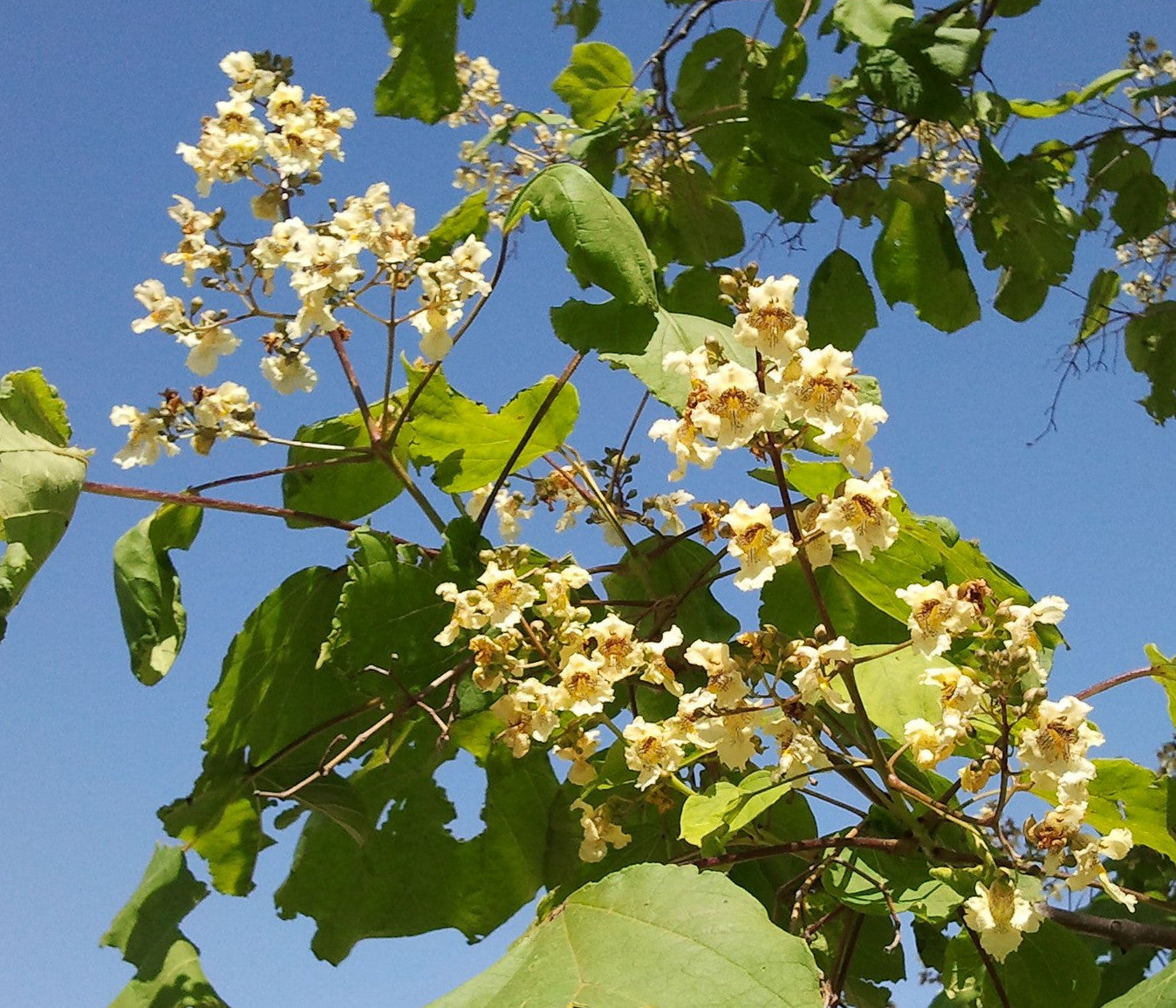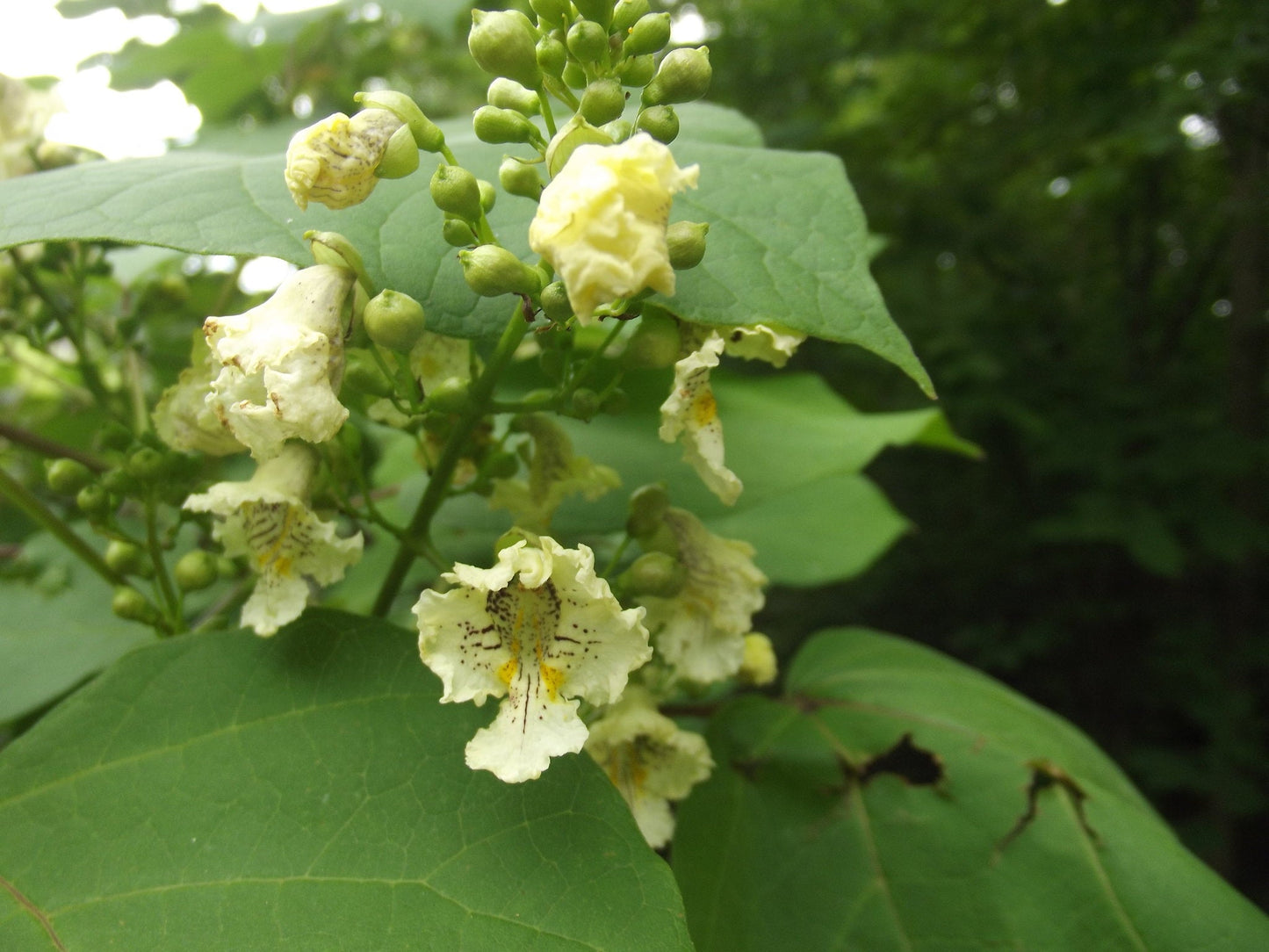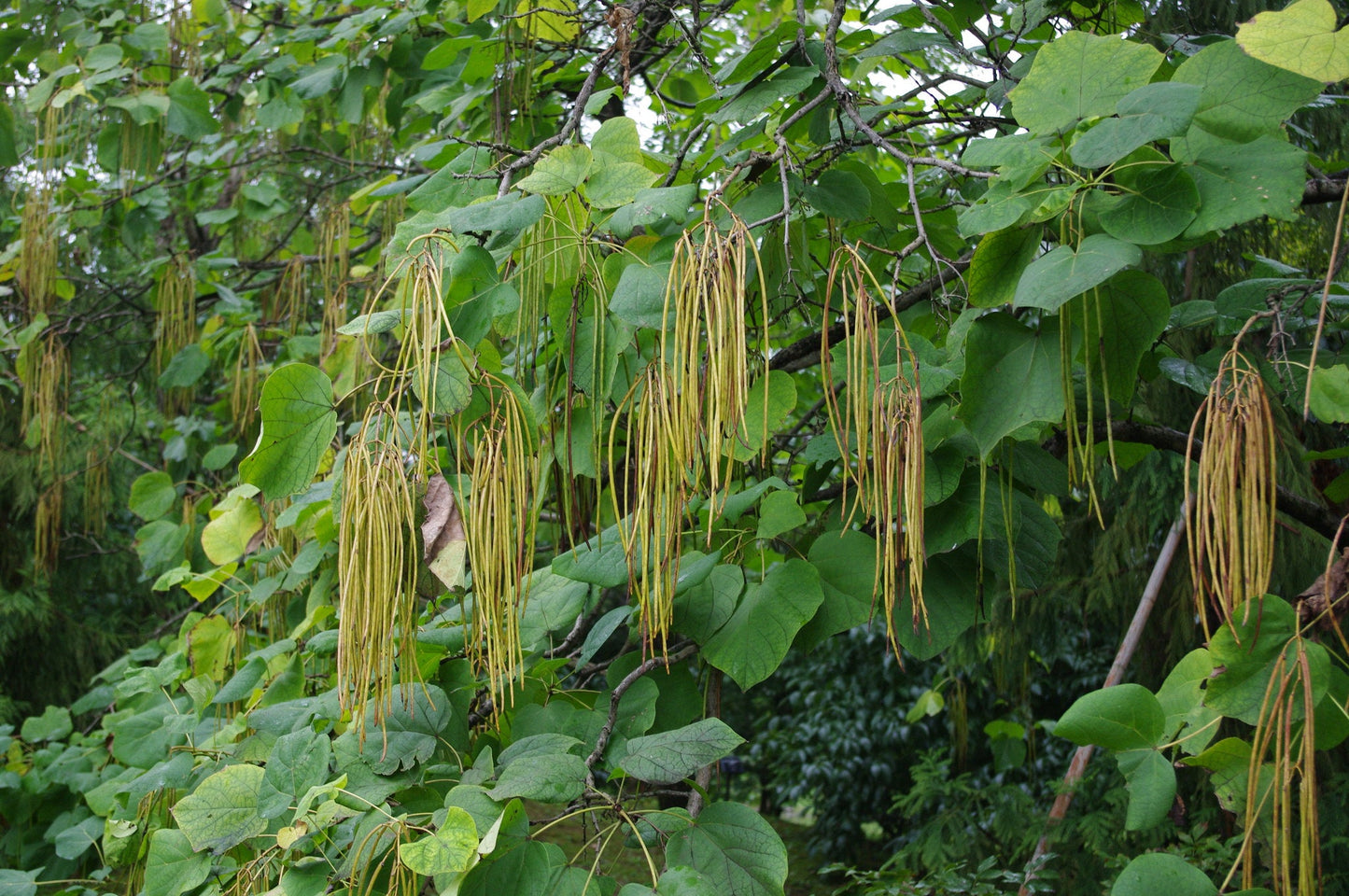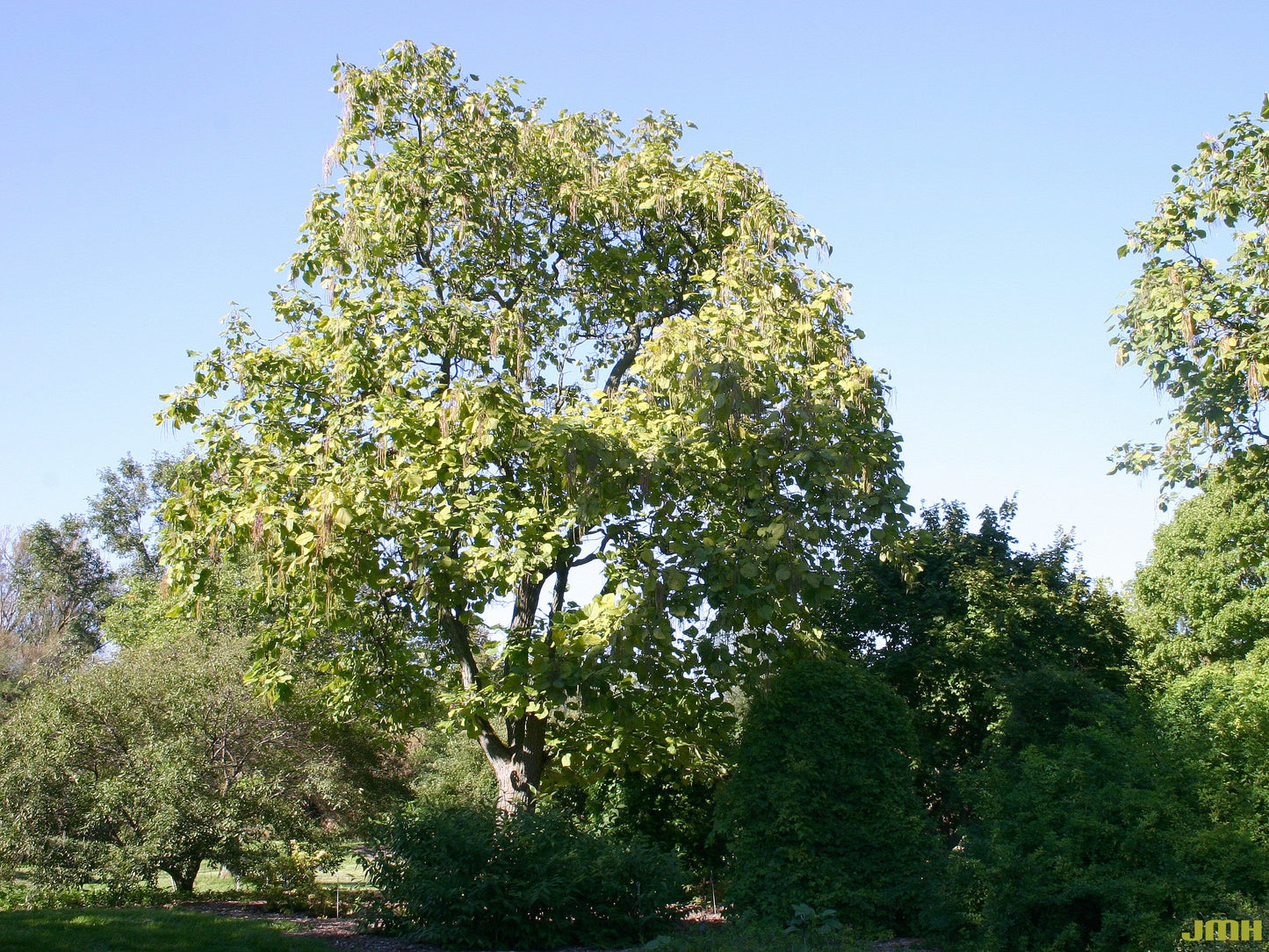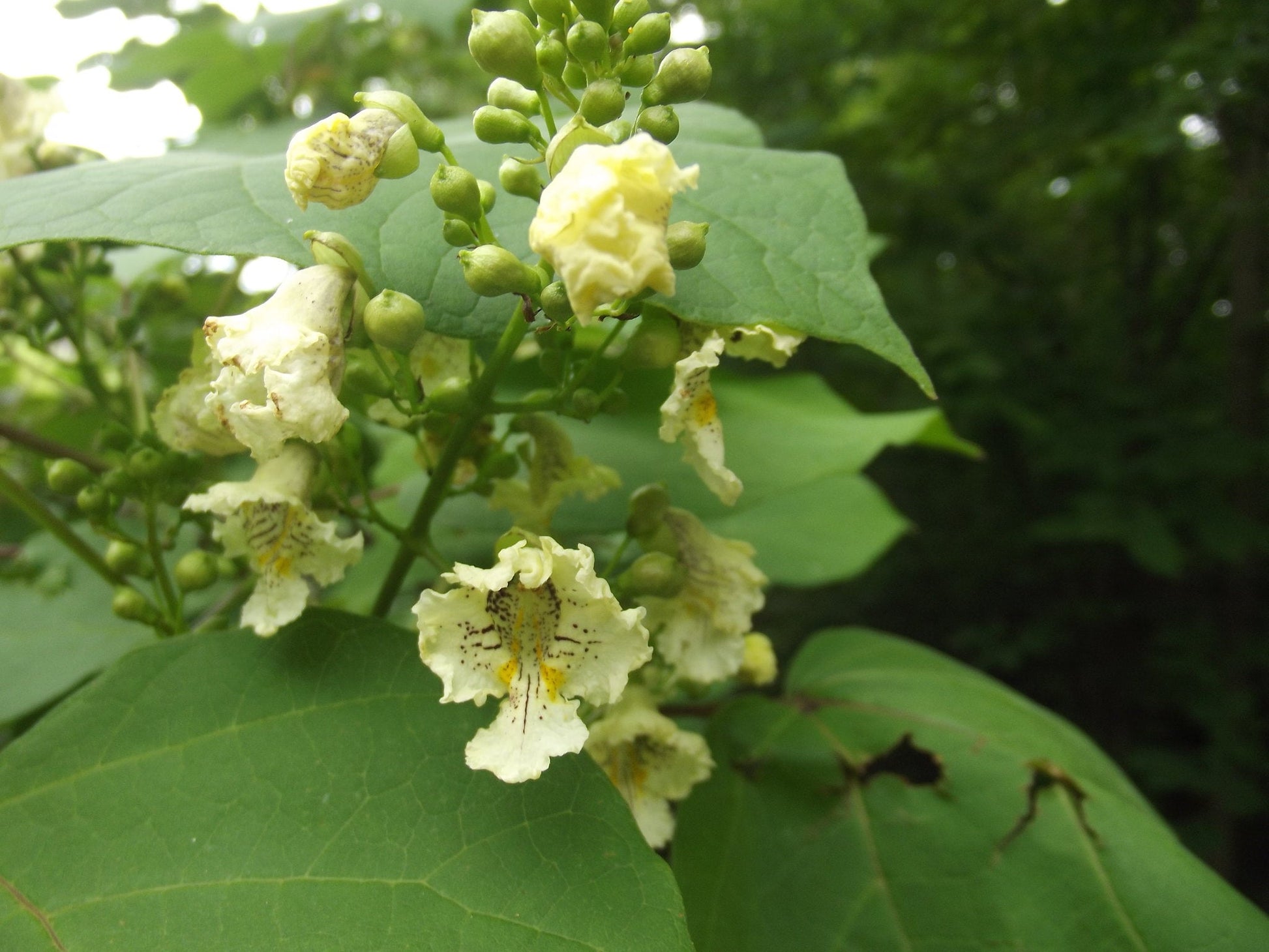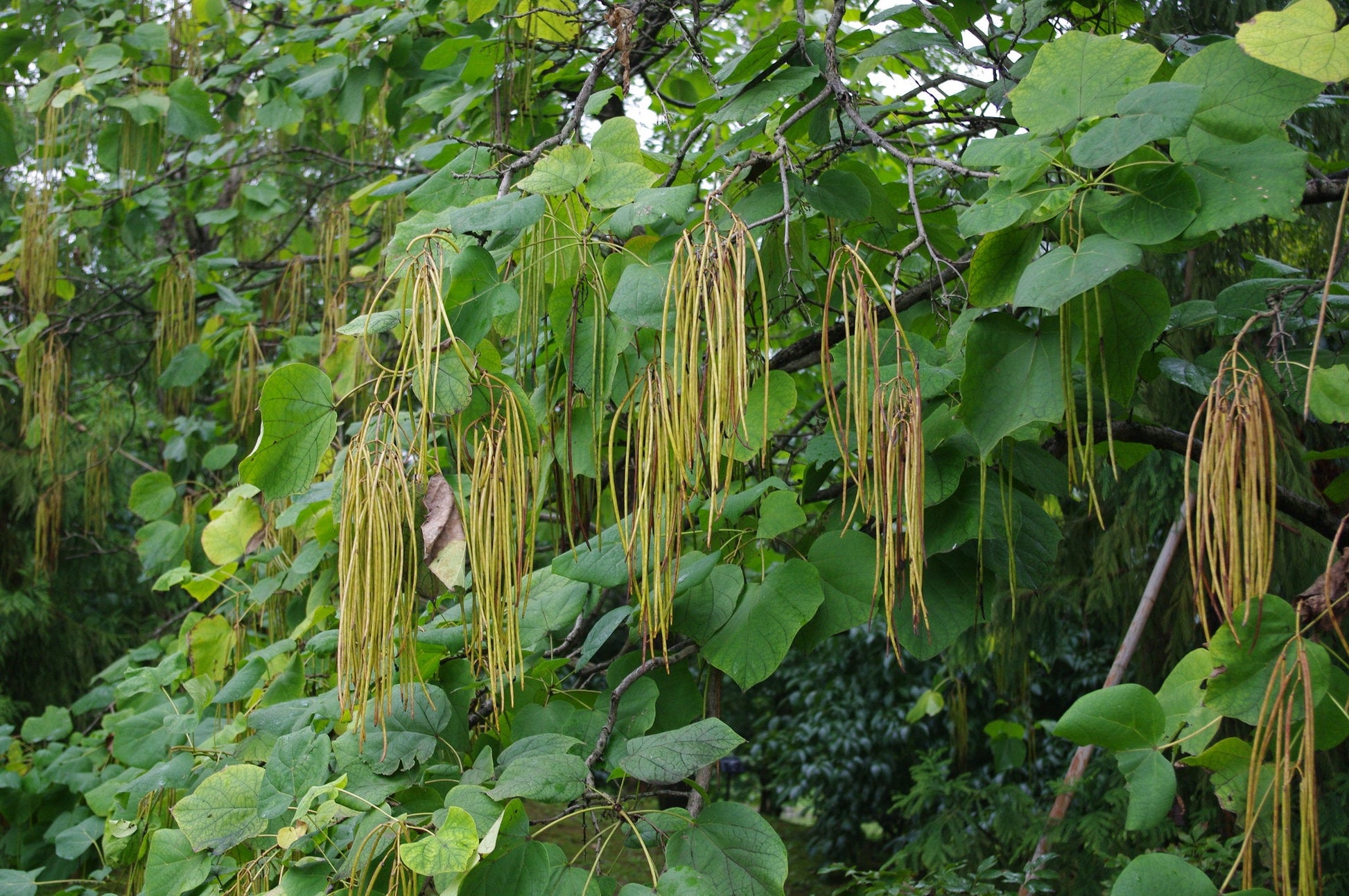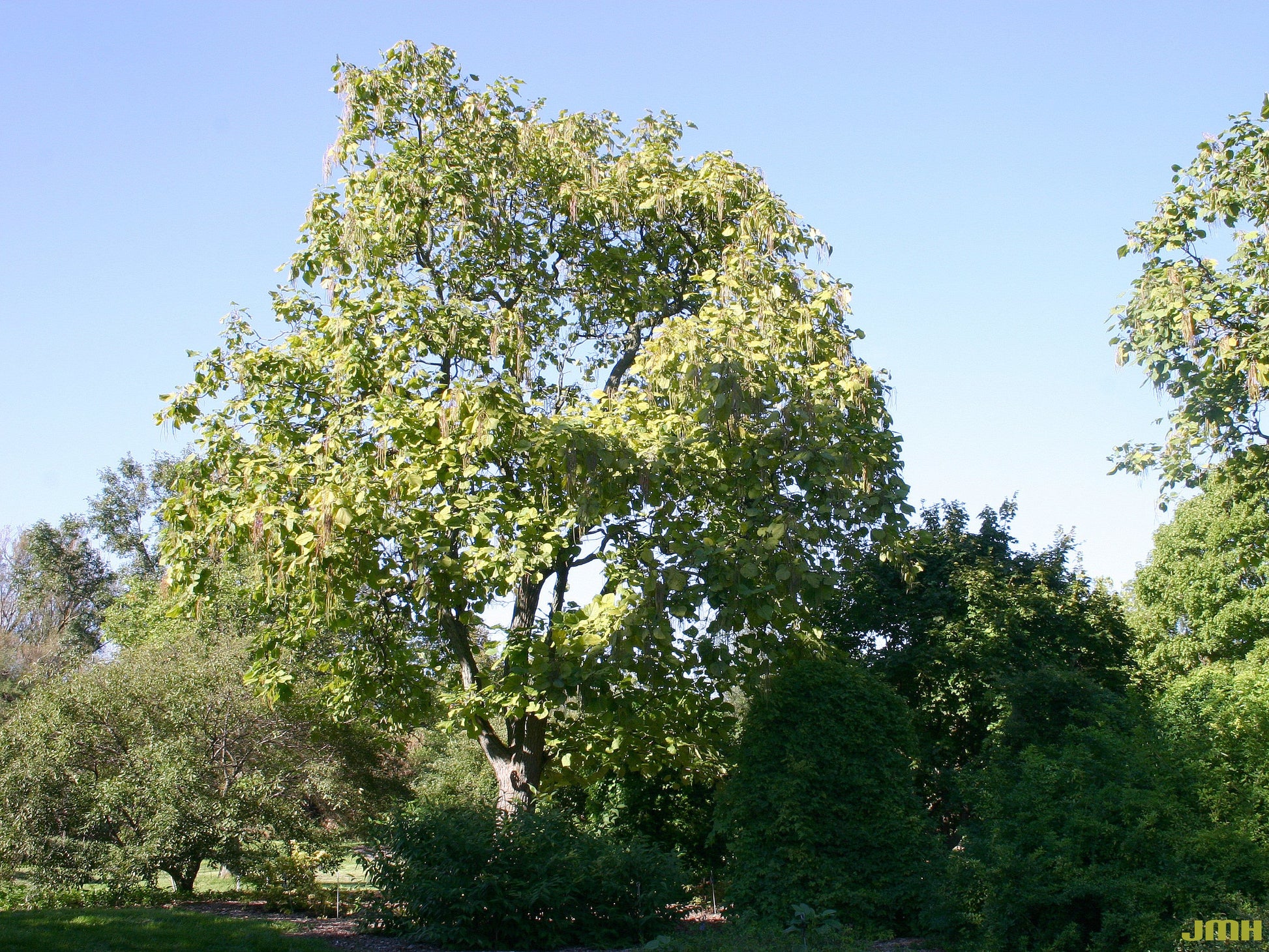Floridaseeds
Yellow Catalpa Catalpa ovata 100 Seeds
Yellow Catalpa Catalpa ovata 100 Seeds
Couldn't load pickup availability
Catalpa ovata, commonly known as the Chinese catalpa or yellow catalpa, is a deciduous tree native to China. Here's a description of Catalpa ovata:
Appearance: Catalpa ovata typically grows to a height of 30-50 feet (9-15 meters) with a spread of about 20-35 feet (6-11 meters). It has a broadly oval to rounded crown and a straight trunk.
Leaves: The leaves of Catalpa ovata are large, heart-shaped, and typically measure 4-10 inches (10-25 cm) in length. They are arranged oppositely along the branches and have a glossy green surface. In autumn, the foliage may turn yellow before dropping.
Flowers: Similar to other catalpa species, Catalpa ovata produces showy, fragrant flowers. These trumpet-shaped flowers appear in late spring to early summer, usually in May or June. They are white with yellow and purple markings and are borne in large, upright clusters known as panicles. The flowers attract bees, butterflies, and hummingbirds.
Fruit: After flowering, Catalpa ovata produces elongated seed capsules that can reach up to 10 inches (25 cm) in length. These capsules contain numerous small, winged seeds and persist on the tree through the winter months.
Bark: The bark of Catalpa ovata is grayish-brown and becomes deeply furrowed with age, developing ridges and scales.
Habitat: In its native range, Catalpa ovata is commonly found growing in forests, along riverbanks, and in mixed woodlands. It prefers moist, well-drained soils and is often cultivated as an ornamental tree in temperate regions around the world.
Uses: Catalpa ovata is valued as an ornamental tree for its attractive flowers and foliage. It is also sometimes grown for its timber, which is lightweight and moderately durable, though not as rot-resistant as some other catalpa species. Hardy in zones 4-8.
Materials
Materials
Shipping & Returns
Shipping & Returns
Dimensions
Dimensions
Care Instructions
Care Instructions
Share
